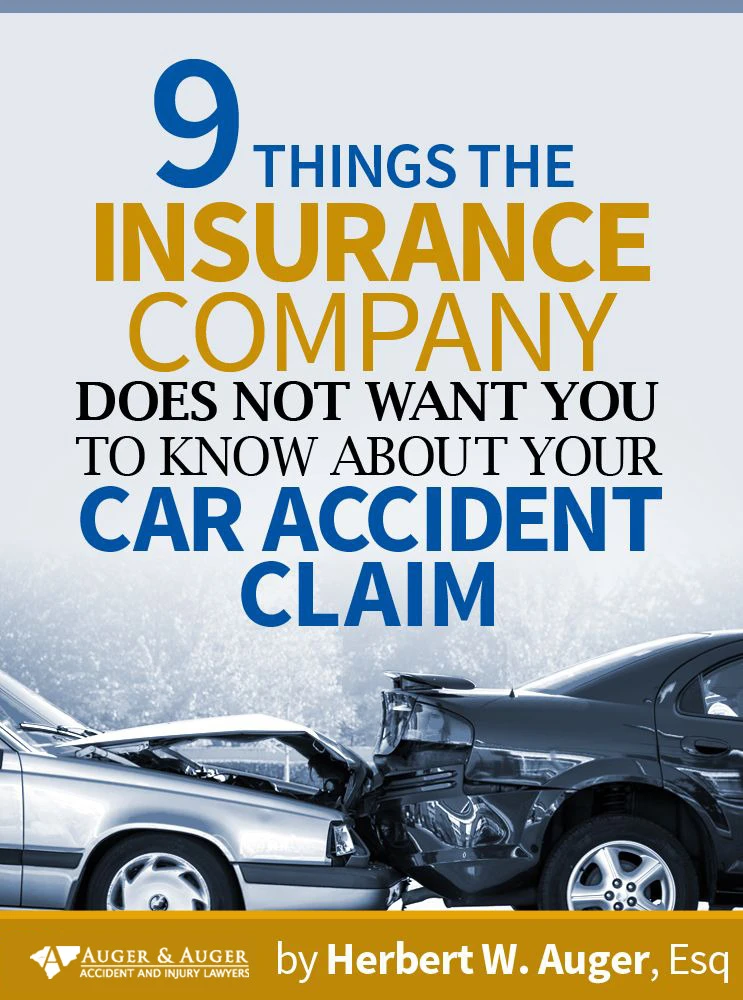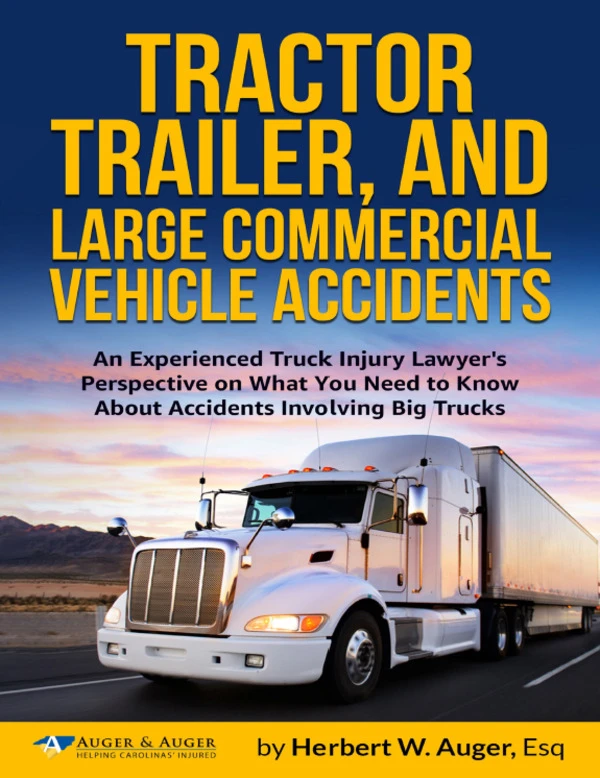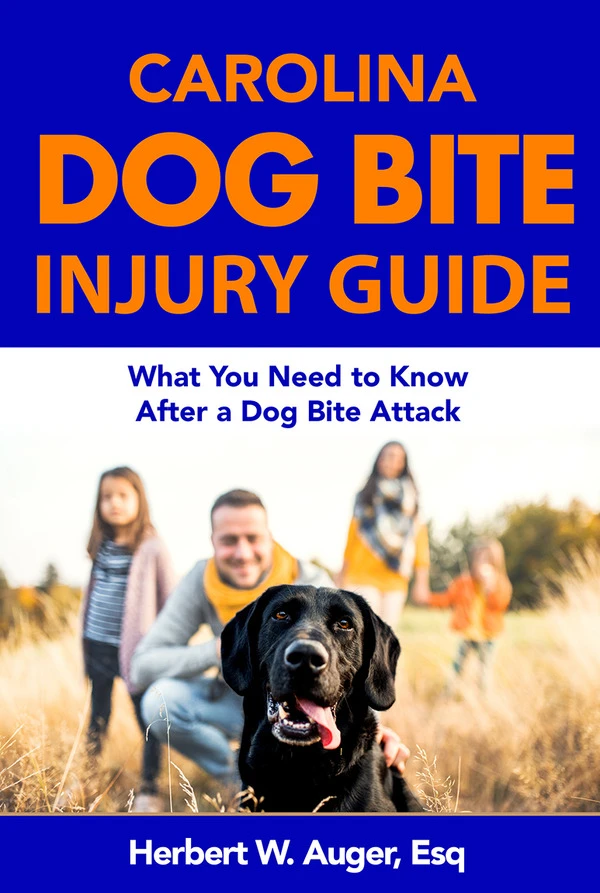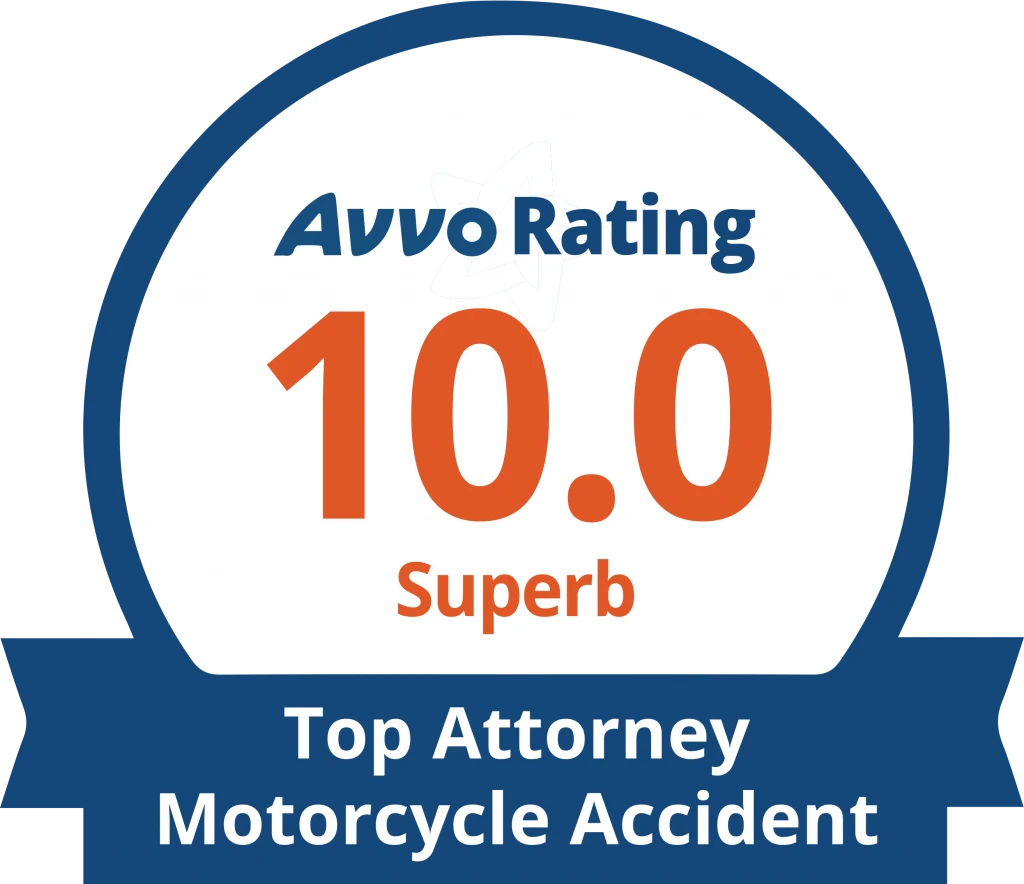Columbia Car Accident Lawyer
The Columbia auto accident attorney division of Auger & Auger knows that vehicle collision injuries can range from mild to severe. Of course, your first step following a collision should be to seek medical attention — even if it isn’t an obvious injury. People often have pain on day two or even a week later, never realizing it was the crash at fault.
Your next step should be to call the firm of Auger & Auger Accident and Injury Lawyers. Our attorneys believe that most accidents aren’t ‘accidents’ at all, and the CDC would agree. According to their research, more than 1,000 people are injured daily due to distracted driving, a completely preventable behavior.
Cell Phones Are Deadly Distractions
You need to be somewhere, but you’re running late, so you grab your breakfast, a cup of coffee, and your phone call list, and decide to finish your morning routine behind the wheel. These activities take your attention away from the road.
If you are a Columbia auto accident attorney, you know that other distractions don’t come close to cell phones. Using a cell phone while driving encompasses all three identified types of distraction: visual, manual, and cognitive. It is illegal in Columbia to text someone while driving, but if you want to hold your phone and chat, you’re free to do so in the eyes of the law.
The World Health Organization (WHO) says that drivers who use their cell phones behind the wheel are four times more likely to be involved in an auto accident. Why? Because most drivers take their eyes off the road to look at their phone (visual distraction), remove their hands from the wheel to hold their phone (manual distraction), and mentally disengage from the road to talk or text (cognitive distraction).
Electronic Device Restrictions in Columbia
Despite legislation known as the DUI-E bill (Driving Under the Influence of Electronics), South Carolina is not among the 14 states that prohibit the use of hand-held cell phones behind the wheel — because the bill never made it to a vote.
While there is no outright prohibition on driving while on a cell phone, there are restrictions. According to Section 56-5-3890 Code of Laws, a driver is not allowed to:
- Read a text, email, or instant message
- Compose a text, email, or instant message
- Send a text, email, or instant message
Interestingly, the code does not specify “cell phone” but prohibits these actions while using a wireless communication device, such as a tablet, cell phone, computer, or media player. A person convicted of violating this law is subject to a $25 fine.
This section of the state code does not apply to you if you are lawfully stopped or parked. It also allows drivers to perform the actions on hands-free devices, and vehicle operators won’t be cited when attempting to summon emergency services. Legalities aside, drivers are urged to refrain from using their cell phones behind the wheel due to the proven danger of the behavior.
Drunk Driving in South Carolina
Driving while drunk or under the influence of drugs is another preventable cause of car accident injuries and deaths, and it’s rising. In 2020, there was a 14 percent uptick in alcohol-related traffic deaths in South Carolina, with 315 fatalities that year versus 276 in 2019. That statistic is even more concerning when you remember that fewer people were on the road in 2020 than 2019 due to the Covid-19 pandemic keeping people home. South Carolina ranks tenth in the nation for drunk driving deaths.
Today, many options exist to get where you’re going if you’ve been drinking. You can choose a designated driver, spend the night at a friend’s place, call a cab, or summon a ride-share from an app on your phone. Even if you’re “just a little” buzzed, don’t take chances – find an alternative to driving yourself home.
What If You Were Hit by a Drunk Driver?
As with any car crash, you should call 911 right away and get medical attention for your injuries. In most situations, the police will notice if the other driver seems intoxicated and ask them for a breathalyzer. They may ask you for one, too – this is a good thing in case the other driver’s attorney argues that you were also intoxicated. Often police will take blood samples from both drivers and perform breath tests.
Before the police arrive, you may want to exchange contact and insurance information with the other driver. This is standard after an accident, but if the other driver is intoxicated and seems belligerent, it may be best to leave them alone. However, you can do the following:
- Use your phone to take pictures or video of the scene if possible. If you aren’t badly hurt and can get out of your car, secure shots of the damage from all sides. You can also get photos of the other car.
- If you notice any open containers of alcohol or drug paraphernalia, you can take pictures or just remember to mention it to law enforcement when they arrive.
- Sometimes the other driver will start using breath sprays or eye drops to conceal their intoxication. Again, the police will probably see right through this behavior too, but it might be worth mentioning to them.
- Did you see the other driver swap seats with a passenger or try to? Mention that to the police.
- Go to the hospital and get your injuries checked out, even if they don’t seem serious. Sometimes pain or other symptoms don’t appear immediately after an accident. Many people are distracted by the situation, or their injuries don’t hurt until later, when swelling may occur as the body tries to heal itself. If you notice any new symptoms within the next week, even if they seem unrelated, see your doctor and explain about the car accident just to be sure.
- Speak with a Columbia auto accident attorney about seeking compensation for your damages.
Types of Car Accidents
There are a lot of ways for collisions to happen on the roads. Defensive driving practices can reduce your risk but won’t always prevent a crash with a reckless driver. Here are the different types of accidents and some common causes:
Rear-End Collisions
These collisions can happen out of nowhere. You’re driving through your neighborhood, or maybe stopped at a light, and suddenly the vehicle behind you crashes into your car. The severity of the accident may vary depending on how fast both vehicles were going and other factors, but many people suffer injuries in rear-end collisions.
You might have numerous kinds of injuries in a rear-end crash, but soft tissue injuries like whiplash are very common. These happen not because of a direct blow to the affected area but because of inertia – the impact of the crash throws a person’s body forward, and the seat belt stops them. But their head still snaps forward, straining the muscles in the neck and shoulders and sometimes causing tissue damage. For most people, the pain will eventually go away with rest, but for others, it may become permanent and chronic.
If the crash’s impact is severe enough, a driver or passenger in the front car may also develop a traumatic brain injury, or TBI. These can also occur due to a person hitting their head, but again, this impact is not necessary to cause an injury. You can have a TBI for the same reason you might develop whiplash – when your head snaps forward, this can also be very jarring for the brain. Brain tissue and blood vessels may be damaged, leading to various neurological symptoms, including headaches, dizziness, loss of consciousness, seizures, behavioral or mood changes, and difficulty with speech or movement.
You may not think you were hurt, but injuries like whiplash and TBI don’t always cause pain or other symptoms right away. Some car accident victims go home feeling fine, then wake up the following day with pain in their back or neck or symptoms of a brain injury. It’s a good idea to see a doctor after your rear-end collision, so you can document the injury and get early treatment if you do have a serious issue.
Usually, rear-end crashes are the fault of the rear driver, with the exception of a few situations like the front driver suddenly driving in reverse. The most common cause of these accidents is following too closely or driving too fast. Distracted driving may also be the cause – if you’re paying attention to the road, you’ll notice immediately if the car in front of you suddenly stops, which gives you more time to stop too.
However, you may find the driver who rear-ended you claims that it was somehow your fault, and their insurance company may agree, simply because it’s an excuse to avoid paying your claim! If this happens, don’t get into it with the insurance company – instead, call a Columbia auto accident attorney right away. We have the experience and knowledge to deal with the insurance company on your behalf.
Head-On Car Accidents
The good news is that head-on crashes are not as common as rear-end accidents. The bad news is that they have a higher potential to cause serious injury or death because they occur in the front of the car, where the driver sits. The momentum of both cars driving toward each other also contributes to making these crashes more serious. Victims may suffer broken bones, TBI, soft tissue injuries, internal bleeding or injuries, and back or spinal cord damage.
Head-on accidents typically happen when one car crosses the median into the oncoming lane. This could happen due to distracted or drowsy driving, especially if the driver falls asleep at the wheel. Driving under the influence and sudden medical problems can also cause head-on collisions. In some cases, speeding or driving recklessly may lead a driver to lose control of the car and cross the double-yellow.
If you’ve been injured in a head-on collision, the other driver may claim that you crossed the median or were driving erratically, which can be frustrating when they caused the crash. Often local law enforcement is swamped with other cases and doesn’t have much time to investigate each car accident. At Auger & Auger, our skilled investigative team will work to gather more evidence, including pounding the pavement looking for witnesses in the area, and seeking photo or video evidence from nearby cameras/phones/doorbells.
Side Impact or T-Bone Collisions
These crashes regularly transpire at intersections, although occasionally, they can happen in parking lots or other locations. One vehicle broadsides another, and the second driver often has no way to avoid the collision, even if they see the other car coming. Swerving usually won’t take the car out of the path of the other vehicle. Sometimes speeding up or slowing down may allow the driver to miss the car heading for a side impact, but this isn’t always possible due to other traffic.
Unfortunately, side impact crashes also have a high potential for serious injuries or death, particularly for anyone on the side of the car that absorbs the impact. Consider that with a front impact, there are several layers of metal in the engine, plus an airbag, between the front seat passengers and the other vehicle. With a side impact, there is only a thin door and possibly an airbag – side impact airbags are standard on all cars manufactured in the US since 2013. Side airbags that offer cushioning for the driver’s head lower the chances of death in a car accident by 37 percent, and 52 percent for an SUV crash. However, some older cars made before 2013 may not have side airbags.
Running a red light or a stop sign, or failing to understand the rules of a four-way stop, are prevalent causes of side impact crashes. Sadly, despite having a substantial risk of injury or death, T-bone crashes often involve situations where it is difficult to prove fault. In many instances, each driver claims they had the light or right of way. Without witnesses, it could be challenging to prove your case, but at Auger & Auger, we will fight to find all the evidence we can to support you.
Sideswipe Collisions
These accidents happen when two vehicles are in adjacent lanes heading in the same direction, and one vehicle moves into the other’s lane. Serious injuries may occur, especially if a sideswiped car is pushed into another lane or vehicle. Unfortunately, it’s very common for a sideswiped driver to lose control of their vehicle, which may veer off the road or into yet another lane.
There are two main causes of sideswipe collisions:
- One driver makes a move to change lanes and doesn’t turn their head to look in their blind spot, missing that another vehicle is there. Using your mirrors is a good practice, but always turn your head and look very briefly before a lane change or turn.
- The driver who crosses lanes falls asleep or is distracted by their phone or other items that take their eyes off the road. As a result, their car drifts into the other lane, striking another vehicle. Those driving under the influence may also be unable to keep their car “between the lines” and drift.
Sideswipe accidents often happen on interstates or other busy, multi-lane highways, so there may be several witnesses to back up your explanation of what happened. However, these drivers may not be in a position to stop, especially on busy, high-speed roads. For this reason, the police might not be able to take witness statements from anyone but you and the other driver. If this happens, our investigative team will work the case, searching for witnesses and other evidence, such as traffic camera footage or other electronic data.
Single Car Accidents
People sometimes feel that single-car accidents are their fault, but there are numerous causes, some of which are beyond the driver’s control. For example, a deer or other large animal darting into the road can wreak havoc on a routine trip. Hitting the deer could damage your car and injure you, even sending you off the road, but swerving to avoid the deer could also cause you to go off the road, hit another vehicle, or crash into a solid object like a tree. Sometimes there is no way to prevent a crash.
Other causes of single car accidents include debris in the road (like large pieces of an exploded tire), road hazards like potholes or slick spots, weather conditions like ice and snow, speeding, tired driving, distracted driving, and drunk driving. Single car accidents may be minor, resulting only in body damage to the car, or they may cause serious injury to the car’s occupants, depending on exactly what happens.
If you have significant medical bills after a single car accident, are you stuck paying them yourself? Not necessarily. Depending on what type of car insurance you have, your insurance may pay some or all of your medical costs and repair work on your car. In a few cases, there may also be a liable third party from whom you could seek compensation, such as:
- A manufacturer of a defective component that contributed to the crash.
- A reckless driver. Even if you didn’t have contact with the other vehicle, if their erratic driving forced you to swerve or go off the road, they may be liable if you can identify them.
- An improperly designed work zone or one that isn’t adequately marked.
Multi-Vehicle Accidents
Crashes involving multiple vehicles are common on the interstate or other places where many cars are traveling close together. Most often, we see a domino effect of rear-end collisions – one car is rear-ended, and the impact pushes it into the car in front of it, which is then propelled into the car in front of it, and so on. A person in one of these vehicles may experience impacts from both the front and back of the car and could suffer serious injuries like broken bones, head injuries or TBI, soft tissue injuries, and internal injuries.
Determining fault in these collisions can be challenging, but your Columbia auto accident attorney is ready to work. We’ll sort out what vehicle was where, who caused the initial impact, what evidence is available, and which insurance policies may apply.
Rollover Crashes
Rollovers can occur with many of the above types of accidents. Any significant impact increases the chances of a vehicle rolling over, especially for vehicles with a high center of gravity, like SUVs. For example, if being struck in a head-on collision sends your car off the road, it could roll over before coming to a complete stop.
Rollovers increase the risk of injuries because the vehicle usually gets hit on every side instead of just one. Even with front and side airbags, a crushed door could cause broken bones or internal injuries. But there is one way to reduce your risk of injury or death in a rollover – always wear your seatbelt. This prevents you from being ejected from the vehicle, a frequent occurrence in rollovers where a driver or passenger is unrestrained. You never know when a reckless driver could come along and cause an accident beyond your control, so buckle up every time, even if you’re only going a short distance.
Free Consultation From Our Columbia Car Accident Attorneys
Auger & Auger Accident and Injury Lawyers has represented victims of auto collisions for more than four decades. If you or a loved one has been injured in an accident resulting from cell phone use or any other type of distraction, or if another driver’s negligence caused the crash, you deserve aggressive representation.
As a Columbia auto accident attorney practice, we believe in treating our clients fairly. We never want to add to your financial distress, and to accomplish this goal, we have initiated our zero-fee guarantee. You don’t owe us payment until we have a successful case outcome, and at that time our fee will be deducted from the compensation.
Call (803) 470-5298 today for your free consultation, with no fees due until recovery!














